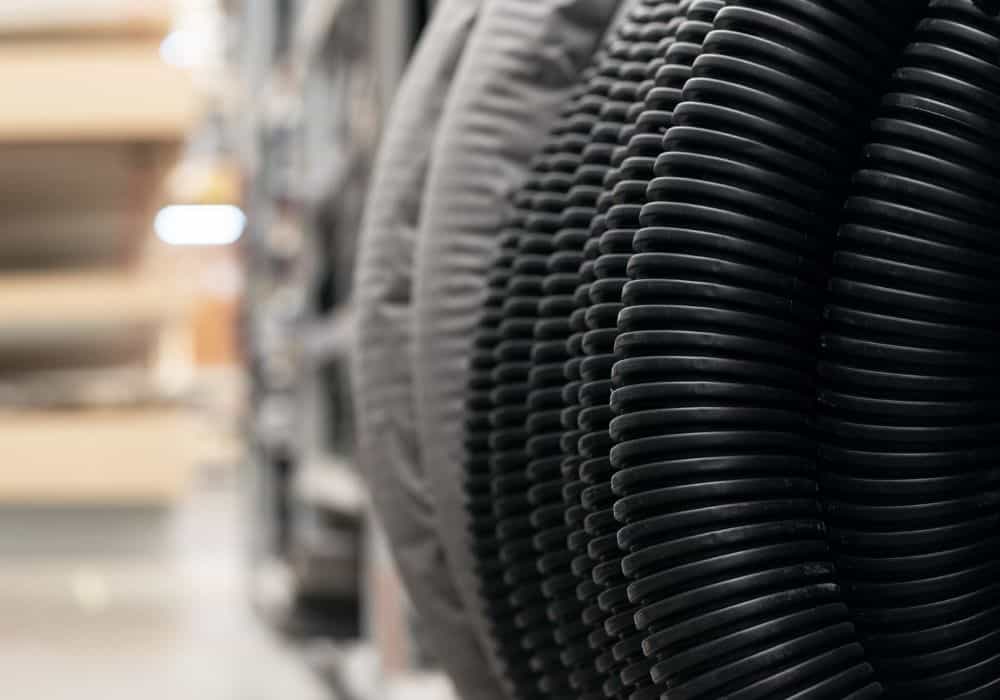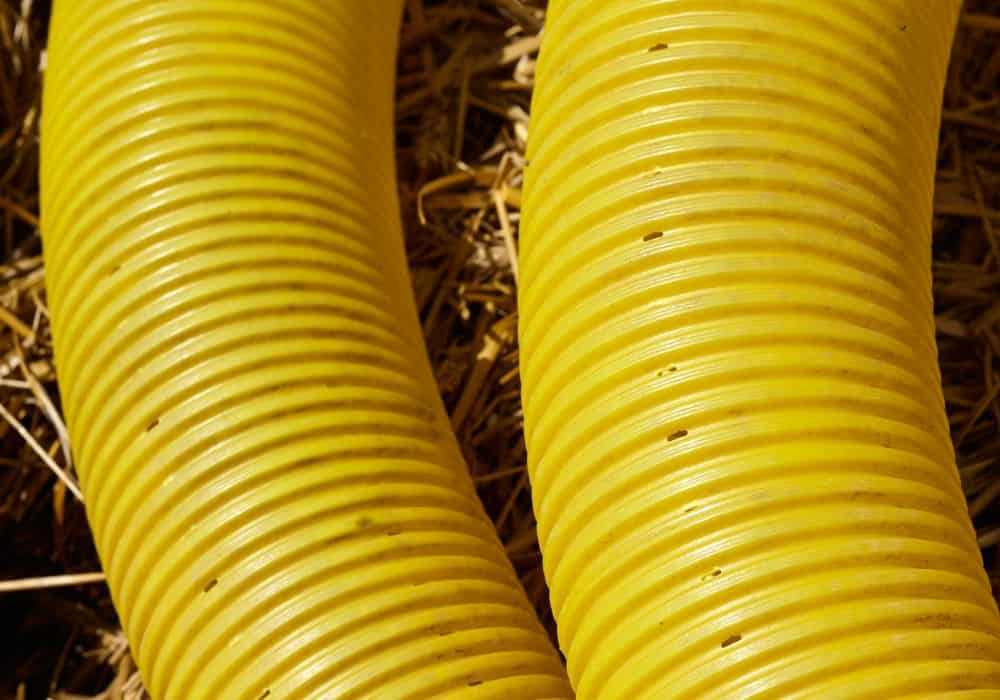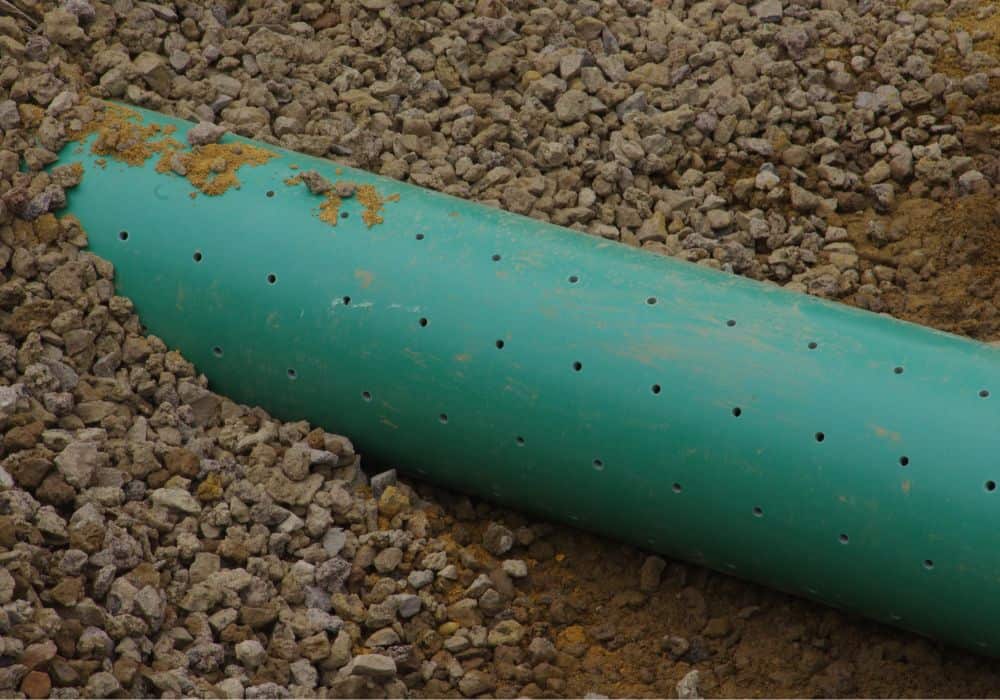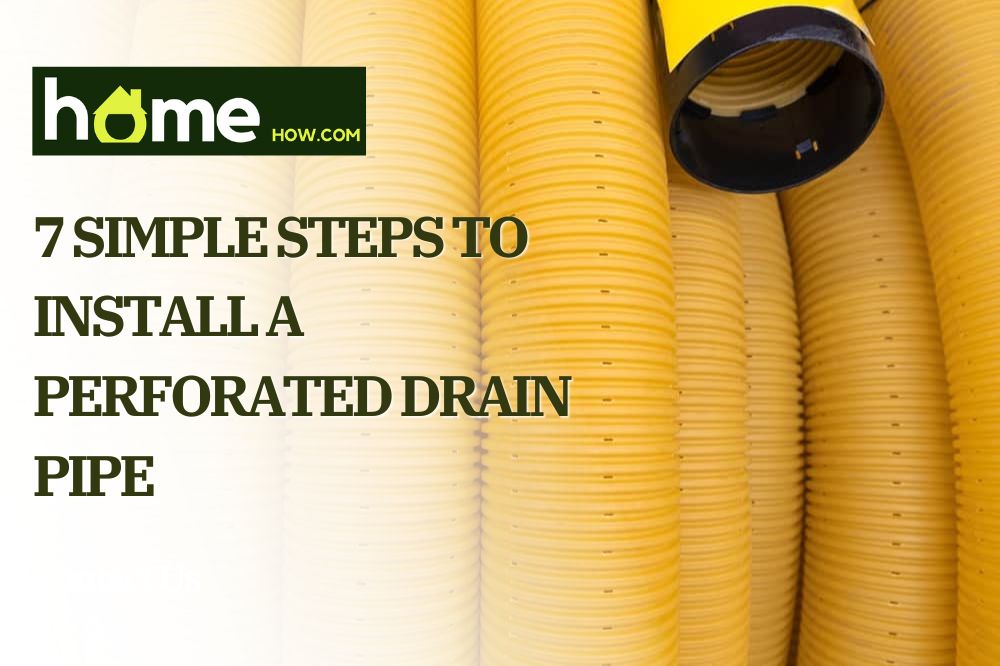Are you tired of having a damp spot in the middle of your yard that does not want to dry out? Have you had problems with the accumulation of water in your basement? If your answer is yes, you have come to the right place.
Many people deal with standing water or excessive groundwater near the foundation of their house or weekend house. As a result, they either have puddles or large areas of mud and standing water.
The best solution is a French drain, also known as a curtain drain. Even though the word French might imply something fancy, in this case, it is the opposite. There is nothing fancy about the French drain!
So, let’s check out what a French drain is, how it works, and, ultimately, how to install it!
What is French Drain?

A French drain is a drainage system often used to deal with excessive water and to divert runoff water to the road curbside, municipal drain, or somewhere else (not your neighbor’s lawn).
It is basically a simple trench filled with gravel or rocks and a perforated pipe. But how does it work?
The French drain or the pipe, more precisely, draws water from the saturated ground and reduces standing water due to gravity; it causes water to flow downhill because water will always follow the path of least resistance, which in this case is downward.
Then it goes through the gravel and rocks into the pipe, where it can flow freely toward a municipal drain, away from your house and yard.
The pipe angle is critical because it has to be put at a slightly downward slope for your French drain to be functional. So even though it sounds illogical to use perforated drainage pipes, there is an explanation for that.
As water comes down from above, it goes through gravel and stones and floods up through the seams of each section of pipe, and the pipe carries it away.
In case you are thinking about the trench drain, it is not the same as the French drain; the trench drain is an above-the-ground system, while the French drain is a subsurface solution.
Do I Need a French Drain?
If you have issues with swampy yards, rainwater, excessive water, and mud, the French drain system is a simple and excellent solution. It will reroute the water away from the low spots on your property and the foundation of your house.
However, if you have severe drainage problems, there may be better choices than the French drain. French drains successfully redirect the water, but there must be a good spot or place where the water will end up eventually.
Furthermore, it has to be installed under a particular slope or angle to achieve this. Otherwise, it will only fill up your French drain, and you will have just a displaced area of the yard soaked with water, which beats the purpose of the drain.
Step-by-Step Guide: How to install a Perforated Drain Pipe?

For this DIY project, you will need
- Shovel
- Gravel
- Perforated Drain Pipe
- Tape Measure
- Stakes
- Tamper
- Sledgehammer
- Landscape fabric
- String
- Garden Rake
Before you start this project, make sure that there is no power, communications, or water lines buried near your trench because you might accidentally cut one of those. You can also call the national hotline to check if and where you have underground utilities.
Then you will have to call a professional to fix the French drain and the severed lines, which might turn this into an expensive DIY project. Also, consult a municipal official about whether you need a permit for your French drain because some areas require a permit.
Step 1: Dig a Trench
Using the shovel, dig a trench approximately twice the width of the perforated pipe. The trench should be around 2 feet deep and slightly sloped downward in the direction you want the water to go. If there are any roots in your French drain, cut them.
Step 2: Install Stakes
Add stakes every four or six feet of your French drain using a sledgehammer. Also, you can pound two stakes into the ground to mark the dimension of the trench.
Then, you connect the stakes with a string, allowing you to measure the grade as you continue with the installation process.
Locate the spot where the water will enter the pipe and tie the strings to the stakes you have installed along your drain. Then, level the stakes using a level line.
As you go from stake to stake, try to create a slope of 1/8 per foot of linear run by moving the string down on the second stake around 1/2 or 1/3 inch.
Step 3: Measure and Compact the Soil

Measure the distance between the strings and the bottom of the trench; start at the beginning of the trench and add or remove gravel depending on the distance as you go from stake to stake.
There should be a consistent distance between the stakes and the bottom of the trench. Then compact the soil with a tamper, but keep the distance between the stakes and the bottom of the trench the same.
Step 4: Remove the Stakes and Add Landscaping Fabric
Your next step is to remove the strings and the stakes, so there is room for the perforated pipe. Install the permeable landscaping fabric in the trench to prevent the soil from mixing with the gravel and potentially clogging the pipe.
Some people tend to use a sock or some other cloth or material for this, but we do not suggest your try this because it is not meant for the purpose that landscaping fabric has.
Don’t be cheap with the landscaping fabric; lay it along the entire trench and extend it onto the surface ground. You will use this to cover the gravel infill, so remember to do this. If your fabric is too short, your French drain might be faulty.
Step 5: Install Gravel Bedding
Pour at least two inches of gravel and smooth it out with a garden rake if you have it at hand. Use this opportunity to check whether you maintained the correct slope of the trench.
As mentioned, the proper slope is vital for the French drain’s function and for achieving optimal drainage.
Step 6: Install the Pipe
Lay the PVC pipe onto the base of your trench, covered with gravel. The holes on the pipe should face down to the bottom of the trench. If the holes point upward, the water has to rise and soak the entire area before it can enter the gaps and be redirected.
After the installation, add another layer of gravel and cover the pipe with it.
Step 7: Cover Gravel and Add Soil
Your last step is to cover the gravel with the landscaping fabric and add soil and sod on top of the material.
Is there another way to install a pipe?
You can install the pipe without using the stakes and strings. However, using the strings and stakes will allow you to achieve that slope and have better control of the process and measuring.
Conclusion
Although you might think that installing a French drain or a perforated pipe is a complicated task, this article will prove you wrong. Do not be discouraged by many steps; if you have time and patience, you will do this in a couple of hours.
Ultimately, you will not have to deal with swampy yards and excess water. Have you ever tried this before? Please, share your experience with us. If you have any questions, do not hesitate to ask!
